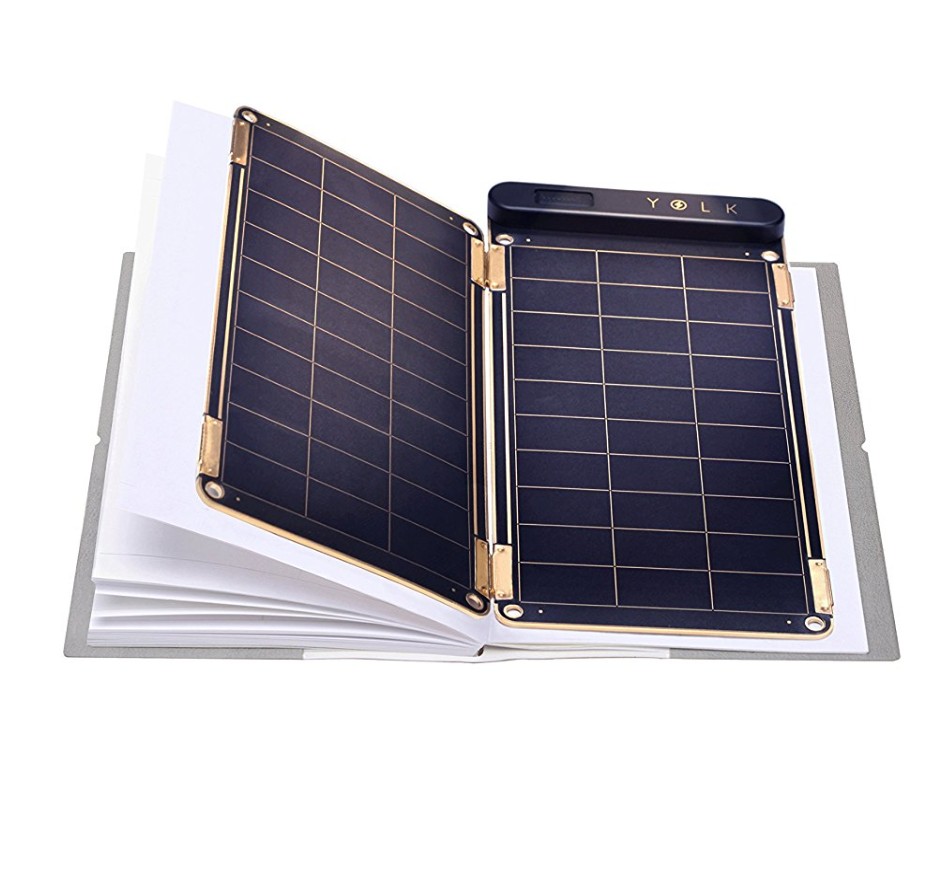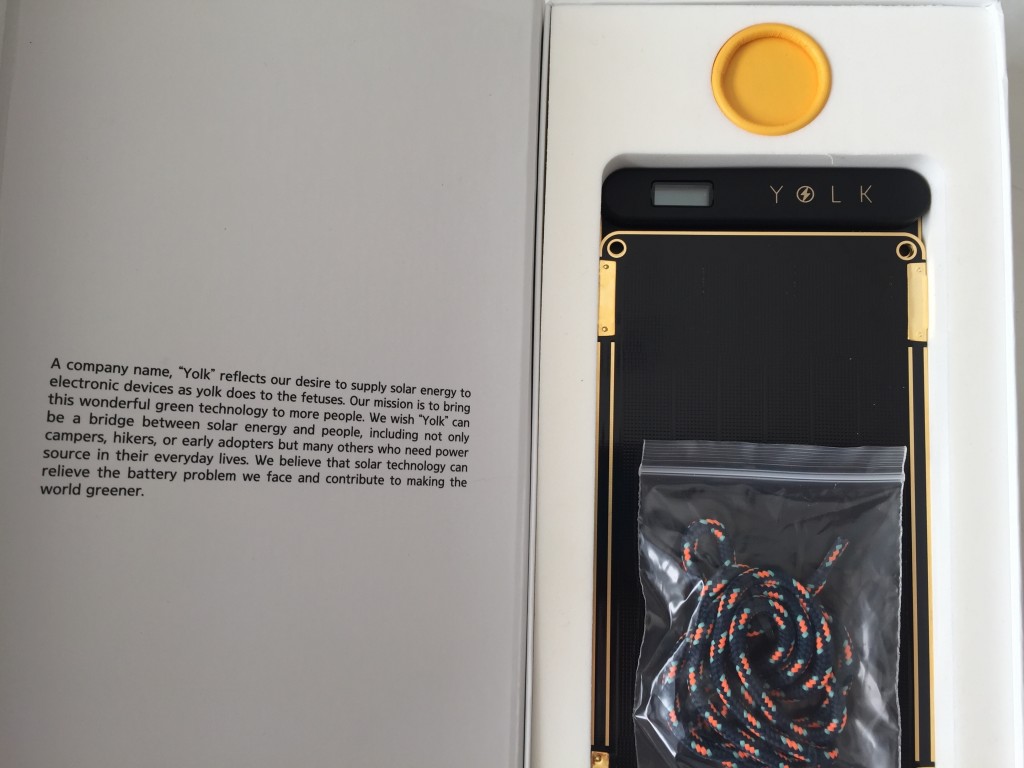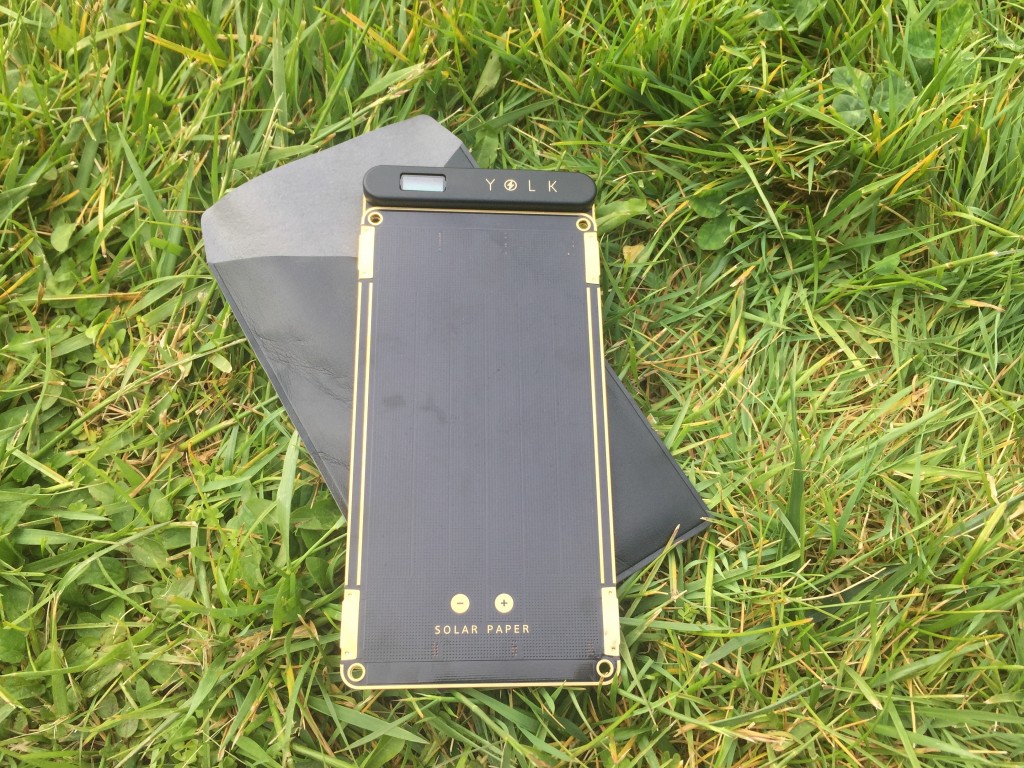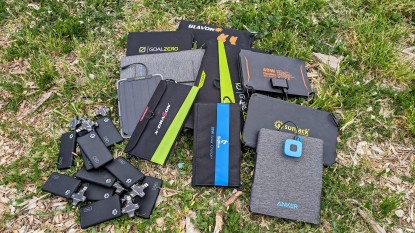YOLK Solar Paper + Pouch Review
Our Verdict
Our Analysis and Test Results
About the size of a folded road map, the Yolk Solar Paper is as portable as it gets. The lightweight, small panels (2.5W each) connect by magnets along the side, combining to create anywhere from a 5W to 15W set-up. We tested the 5W panel and were a bit disappointed by the results. That said, it recovers after an interruption. This is a decent panel, but there are better models that cost less.
Performance Comparison
Charge Interruption Recovery
The Yolk Solar Paper did not perform very well in this metric. This is not surprising, considering the size of the panels themselves. Through testing dozens of different panels of varying shapes and sizes, we have found that those with more surface area, and thus a larger capacity, are better at recovering a charge after an interruption. This explains why panels like the X-Dragon 40W can continue charging after being shaded, while the tiny Yolk panel is not. During testing, we shaded the Yolk intermittently over a 30-minute period and found that it could not charge the battery pack at all during this time. The Renogy 10W also struggled to charge when shaded, as did the most of the other small capacity panels we tested.
Charging Speed
When it came to our side-by-side testing, the Yolk solar paper did not perform as well as other panels of similar capacities. The Yolk 5W panel was plugged into our small external batteries at the same time as the Renogy 10W and left in direct sun for 1:45 minutes. After this time, we checked the batteries again and that while the Renogy had charged the battery from 0% to 23%, the Yolk had only charged the battery from 0% to 5%. This is a dramatic difference from two panels of the same capacity. The Renogy 5W, which is the same size as the Yolk, charged the battery pack to 5% in less time. The Yolk paper is perhaps too small to sufficiently charge a battery pack in a reasonable amount of time.
Multiple Device Charging Speed
The Yolk Solar Paper does not have the option to charge multiple devices at once, and thus received a low score in this metric. Panels of this capacity, like the Renogy 10W or the Renogy 5W typically do not have the output power to charge two devices simultaneously. If this is a feature that is important to you, check out a higher-capacity panel, like the X-Dragon 40W or our Editor's Choice award winner, the Anker 21W.
Durability
These paper-thin panels are lightweight and cool-looking, but when it comes to durability, the Yolk Solar Paper falls a bit short. Each panel connects using small magnetic strips along the sides. These magnets attract dirt and dust, making them lose their strength. This results in the panels falling apart or dropping, especially if you have them hung up in direct sun. These panels are not necessarily designed for outdoor use, so if you are looking for a more durable option, try either of the Renogy panels we tested (5W or 10W). Folding panels that have canvas on the outside, like the very durable Anker 21, are going to have the most longevity for rugged, outdoor use.
Weight & Portability
Though the Yolk scored low on the durability metric, this small panel is undoubtedly one of the most lightweight. This 5W panel is the lightest panel in this review. It is incredibly thin, hence the name “Solar Paper”. These features are great, but the fact that the Yolk lacks durability makes it fall short of the other lightweight panels, like the Renogy 5W. It also lacks the output power of most other panels in this review, including other small capacity panels like the Goal Zero Nomad 7.
Best Application
This panel is best for urban use. The thin, delicate design is not ideal for backcountry travel. This is unfortunate because the Yolk is the most light-weight panel we tested. We were hoping to find the ultimate lightweight panel for backpacking, but the Yolk lacks the durability for this purpose. It is also costly, which is another downside to taking the Yolk into the backcountry. We still found the Renogy E.Flex5 to better fill this role as our Top Pick for portability.
Value
For its size and capacity, this is the most expensive product we have reviewed. The Yolk Solar Paper costs $148 for the 5W version or $248 for a 10W panel. This outrageously expensive, especially for a panel that does not work any better than its less-expensive counterparts. Similar in price is the Voltaic Arc 20, which is not only a 20W panel but also comes with a large capacity external battery. The Renogy 5W costs $30 and is more durable and efficient than the Yolk.
Conclusion
This product is more of a novelty product than anything else. It looks sleek and cool, and can practically be used as a bookmark it is so small. That said, the Yolk Solar Paper is expensive, not very efficient, and pretty delicate. All of these cons outweighed the pros to us, making the Yolk a product that we had a hard time getting behind.









